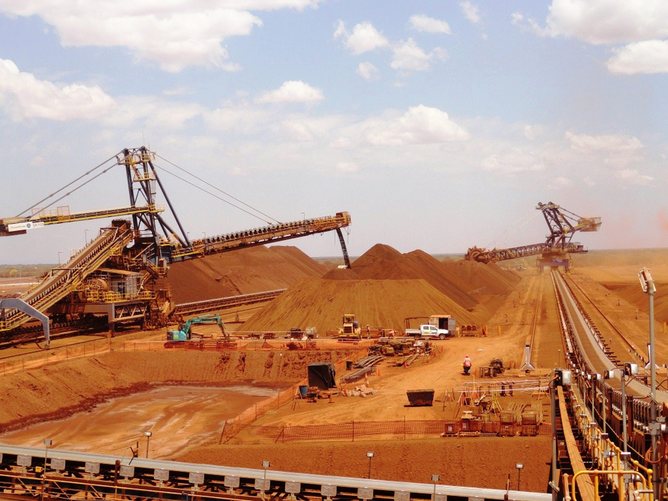This website uses cookies, including third party ones, to allow for analysis of how people use our website in order to improve your experience and our services. By continuing to use our website, you agree to the use of such cookies. Click here for more information on our and .
By Francis Browne, Editorial Director – Price Group, Platts. Francis will be presenting at the Global Iron Ore & Steel Forecast conference, to be held on the 11th and 12th March 2014 in Perth.
The last decade has witnessed a change in fortunes for steel makers and miners, the communities they serve and that serve them. Iron ore has taken a central role in that change. You might feel we are in a new Iron Age, we remain firmly however in the age of steel where the price of iron ore plots the dynamic of our age, daily.
Perhaps it seems odd to talk of an iron or steel age in the 21st Century; however as the world population grows – seeking more food, shelter and energy than ever before – steel is the material of choice providing the solutions we need. Urbanisation and economic development are enabled by steel and iron ore fuels the furnaces of the world providing the material of growth.
The relationship between miner and steelmaker has never been more important for all our futures. Market based pricing has enabled them to move on from the fraught protracted negotiations of the benchmark era which threatened that relationship. The transparency of iron ore pricing that now exists has enabled investment needed for future production in both steel and iron ore to provide society’s growing needs.
Furnace economics
The seeds for this change were sown in the early part of this century, as China started on its extraordinary economic growth trajectory. Two things happened in 2001: steel in the West fell into a near terminal spiral of decline, dogged by overcapacity and stagnant demand; by contrast demand in China was stimulated by rapid economic expansion after joining the World Trade Organisation.
At the time, hot rolled coil sold anywhere fetched not much more than $230/mt and iron ore was fixed at less than $24 a ton FOB for the year. Steelmakers and miners shared their misfortune. The world produced 850 million tons of steel much of which was loss making and miners had no means to invest in future projects.
 By 2004, fuelled by China’s steel capacity expansion, world production went over 1 billion tons for the first time. The iron ore required to fuel this expansion was tied up in annual contracts priced around $29 FOB, a level that was not stimulating the investment and ramp up needed to satisfy growing demand. Where there is a need there is generally a way, and for China that way was India. With iron ore available outside of contract and with empty coal ships looking for a back haul cargo, the iron ore spot market was born.
By 2004, fuelled by China’s steel capacity expansion, world production went over 1 billion tons for the first time. The iron ore required to fuel this expansion was tied up in annual contracts priced around $29 FOB, a level that was not stimulating the investment and ramp up needed to satisfy growing demand. Where there is a need there is generally a way, and for China that way was India. With iron ore available outside of contract and with empty coal ships looking for a back haul cargo, the iron ore spot market was born.
In December 2007, at a steel conference in Paris during a debate about derivatives, a prominent steel executive challenged those wishing to launch steel futures to look instead at raw materials. Iron ore contract prices had hit $65 FOB that year and were soon to double the following year. Steel prices also spiked with hot rolled coil selling above $1000/mt for the first time ever in mid-2008. Steel makers and miners could not agree how to share the fortune. By the end of 2008 many publishers prompted by banks had launched weekly iron ore indices, intended to settle derivative instruments. Platts however, always of independent mind, launched a daily iron ore assessment, IODEX with the primary purpose of providing valuable market information.
The world fell apart in 2009, entering the global financial crisis. Steel makers and miners adjusted contract prices accordingly in the face of economic reality. China stimulated its economy to protect its self from the fall out and continued to grow, demanding even more steel, importing even more iron ore.
By 2010 daily published iron ore spot prices had made a once opaque market transparent. While annual contract prices, muted by global economic woes, languished around $61 FOB, spot prices on the other hand stimulated by Chinese marginal demand, peaked in April at $181 CFR, a difference that proved too attractive for the miners and also for some steel makers willing to resell contract material. The benchmark system collapsed and steel makers and miners entered a new world of market pricing.
Market pricing

At first the system appeared nothing more than a shift from annual to quarterly pricing but a sea change had occurred as independently published and assessed prices had replaced bilaterally negotiation as the primary basis of price mechanisms within contracts.
Almost immediately quarterly pricing moved to monthly, as long term contracts came up for renewal. In many cases monthly pricing have shifted to floating, where the price basis is formed around loading or delivery dates.
As security of iron ore supply became less of an issue in 2012 and 2013 more steel makers were committing less of their requirement to long term contracts, seeking more flexibility in volume.
During this period the iron ore price itself began to be seen not just as an indicator of value of iron ore’s demand and supply fundamentals but as a leading macro-economic indicator of the Chinese economy. Iron ore joined commodity asset classes like oil and gold as a leading economic indicator, where changes in direction and trend affect all those involved in the its value chain and particularly the economies of those countries that dominate its supply base.
You could say that at the beginning of 21st Century iron ore came of age.
Visit the Global Iron Ore & Steel Forecast website for more information, to see the full speaker line-up and to register.
*Iron ore contract prices based on Hamersley PB lump and fines, Spot price Platts IODEX, Steel prices SBB.com

